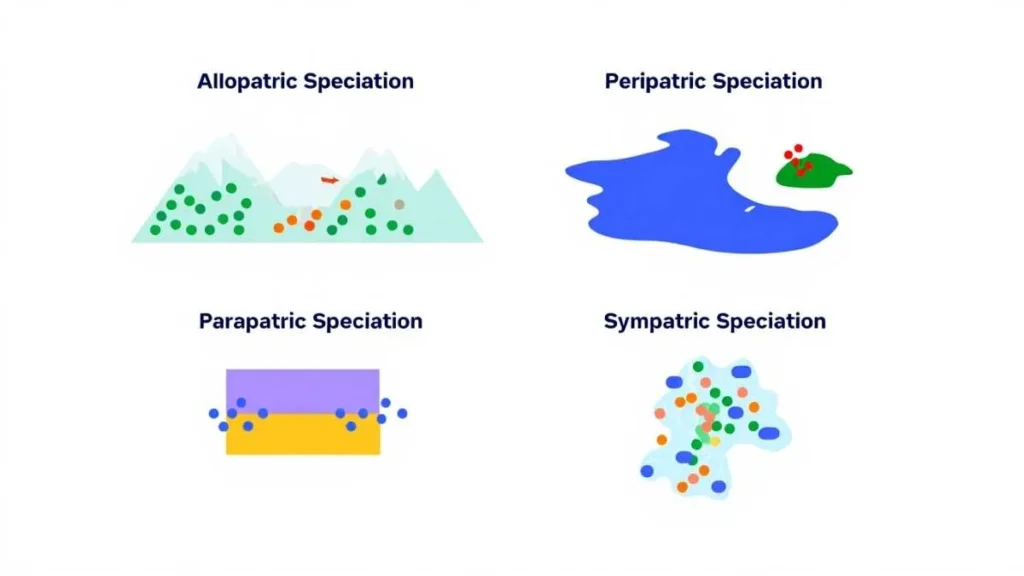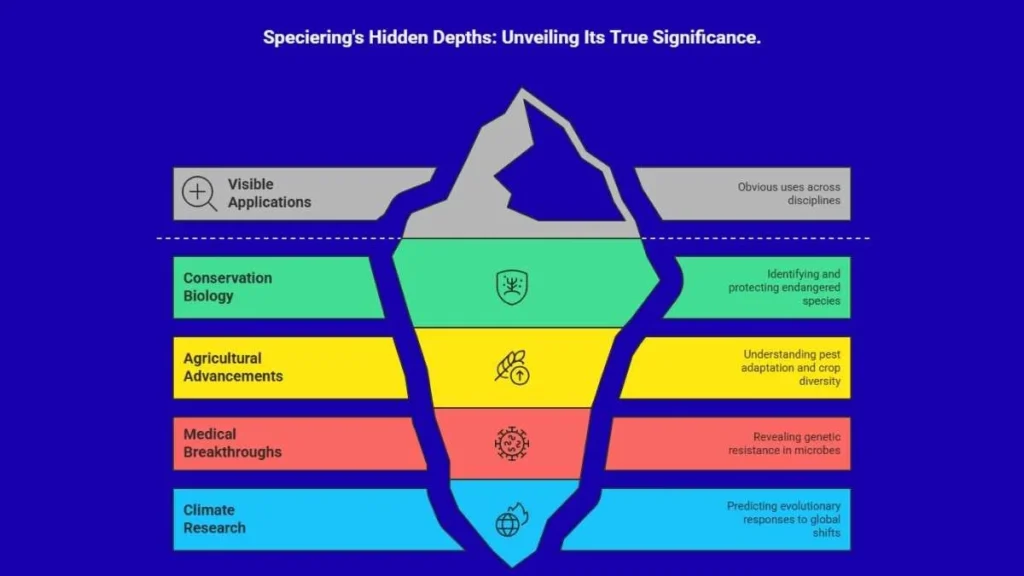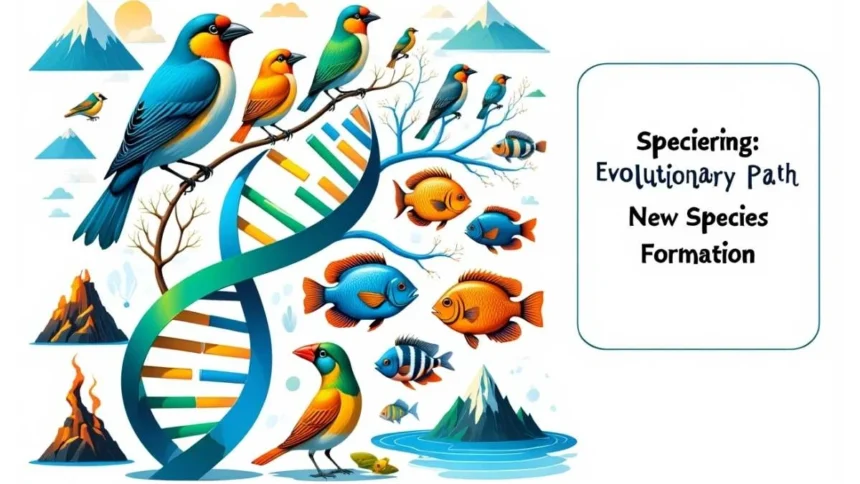Speciering is the evolutionary process through which new species evolve from a shared ancestor. It occurs when populations of the same species become reproductively isolated, preventing interbreeding and leading to genetic divergence. This isolation may arise from geographical barriers, ecological changes, genetic variations, or behavioral shifts, which over time create distinct biological identities.
- The Core of Speciering: Evolution and Common Origins
- Types of Speciering: Different Paths of Evolution
- Overview of Major Speciering Types
- Real-World Illustrations of Speciering
- Genetic and Environmental Drivers of Speciering
- The Role of Speciering in Global Biodiversity
- Speciering and Human Evolution
- Modern Importance of Understanding Speciering
- FAQs
- Conclusion: Nature’s Endless Creative Process
In simple terms, speciering explains how life diversifies and adapts to the planet’s changing environments. It is the mechanism behind the evolution of biodiversity, shaping everything from Darwin’s finches in the Galápagos to African cichlid fish. Understanding speciering helps us appreciate how evolution constantly renews life, forming new organisms perfectly suited to survive and thrive.
The Core of Speciering: Evolution and Common Origins
Every living species traces its roots to a common ancestor through continuous evolution. Charles Darwin’s theory of natural selection describes how small, beneficial variations accumulate over generations. When populations become isolated, they evolve independently, producing distinct gene pools that eventually make crossbreeding impossible.
This divergence marks the beginning of speciering, forming the intricate branches of the tree of life. Each branch represents millions of years of adaptation, survival, and natural experimentation, a timeless process that defines biological diversity.
Types of Speciering: Different Paths of Evolution
Speciering can occur through several evolutionary pathways, each influenced by the environment and population behavior. The four primary types are allopatric, peripatric, parapatric, and sympatric speciering.

1. Allopatric Isolation
- Happens when populations are separated geographically by barriers like mountains or oceans.
- Isolated populations face unique environmental pressures, leading to genetic variation.
- Example: Darwin’s finches developed distinct beaks suited to island-specific diets.
2. Peripatric Divergence
- Occurs when a small subgroup becomes isolated at the edge of the parent population’s range.
- Genetic drift plays a strong role due to the smaller gene pool.
- Example: The London Underground mosquito evolved separately from surface mosquitoes, adapting to underground life.
3. Parapatric Differentiation
- Populations remain adjacent but face different environmental conditions.
- Hybrids between groups may have low fitness, reinforcing reproductive barriers.
- Example: Metal-tolerant grasses near mining zones evolve differently from nearby normal soil populations.
4. Sympatric Formation
- Speciering within the same geographic area, without barriers.
- Driven by sexual selection or ecological niche specialization.
- Example: Cichlid fish in African lakes evolved hundreds of species with varied diets and colors while living together.
Overview of Major Speciering Types
| Type of Speciering | Isolation Factor | Key Example | Main Mechanism |
| Allopatric | Geographic barriers | Darwin’s finches (Galápagos) | Natural selection, distance |
| Peripatric | Peripheral isolation | London Underground mosquito | Genetic drift, adaptation |
| Parapatric | Adjacent environment zones | Metal-tolerant grass populations | Divergent selection |
| Sympatric | Behavioral/ecological | African cichlid fish | Sexual selection, mutation |
Real-World Illustrations of Speciering
Darwin’s Finches
Each island’s finches adapted to its food source, some with long beaks for insects, others short for seeds, demonstrating natural selection at work.
Cichlid Fish Diversity
In Africa’s Great Lakes, hundreds of cichlid species evolved from a single ancestor, showcasing adaptive radiation.
Apple Maggot Flies
Some flies shifted from hawthorn fruits to apples, causing host-based reproductive isolation and forming two distinct populations.
Genetic and Environmental Drivers of Speciering
Speciation is fueled by the interplay of genetic variation and environmental change. Mutations, genetic drift, and recombination introduce new traits into populations. Natural selection then acts on these traits, favoring those that improve survival and reproduction.
Environmental factors, such as climate change, habitat fragmentation, and competition for resources, accelerate this process. When species encounter new ecological niches, rapid adaptation often leads to adaptive radiation, producing multiple new species from a single ancestor.
The Role of Speciering in Global Biodiversity
It acts as nature’s creative engine, continually adding new forms of life. Each new species strengthens ecosystems by:
- Promoting ecological balance through food chains and pollination.
- Increasing genetic diversity that boosts resilience to change.
- Enabling species to adapt to shifting climates and new habitats.
However, human activities, deforestation, pollution, and global warming are disrupting this natural rhythm. Conservationists now aim to protect evolutionary processes, not just individual species, ensuring the ongoing creation of life.
Speciering and Human Evolution
Our own species is a result of it. From Australopithecus to Homo sapiens, multiple evolutionary branches emerged. Some, like Neanderthals and Denisovans, eventually went extinct after limited interbreeding.
Studying human speciering provides insight into adaptation, our larger brains, complex language, and cultural evolution, all stem from gradual genetic and behavioral divergence.
Modern Importance of Understanding Speciering
The concept is vital beyond biology; it influences several scientific fields:
- Conservation biology: Identifying new or endangered species.
- Agriculture: Understanding pest adaptation and crop diversity.
- Medicine: Revealing genetic resistance mechanisms in microbes.
- Climate research: Predicting evolutionary responses to global shifts.

Such insights make speciering essential to sustaining biodiversity and human progress alike.
FAQs
Q1: How long does it usually take?
It can range from a few thousand years to millions, depending on environmental conditions and mutation rates.
Q2: Can humans trigger speciering artificially?
Yes, through controlled breeding or genetic modification, but such outcomes differ from natural speciation.
Q3: Is speciering still happening today?
Absolutely, new species continue to emerge as ecosystems adapt to climate change and human impact.
Conclusion: Nature’s Endless Creative Process
Speciering is more than a scientific concept; it is life’s continuous renewal system. It drives adaptation, ensures survival, and fuels the growth of biodiversity on Earth.
As ecosystems evolve, speciering shapes new possibilities for life. From the finches of the Galápagos to the origins of humanity itself, this process highlights how evolution never stops creating. Protecting it means protecting the planet’s future balance and biological richness.








